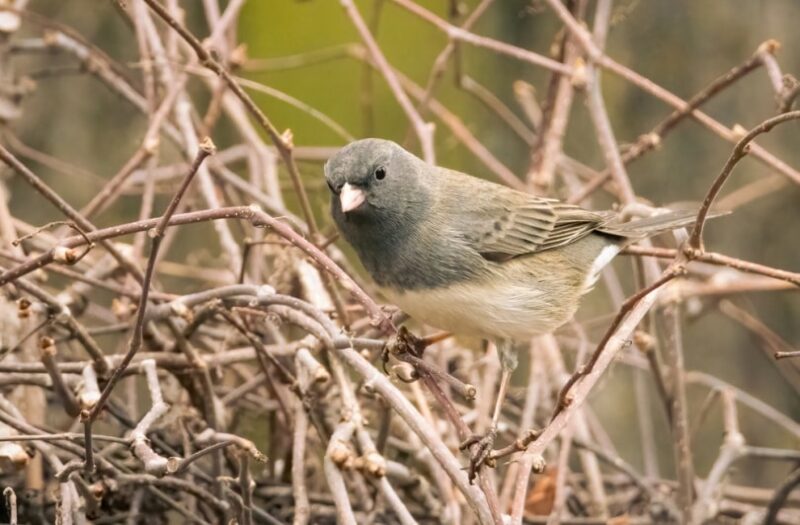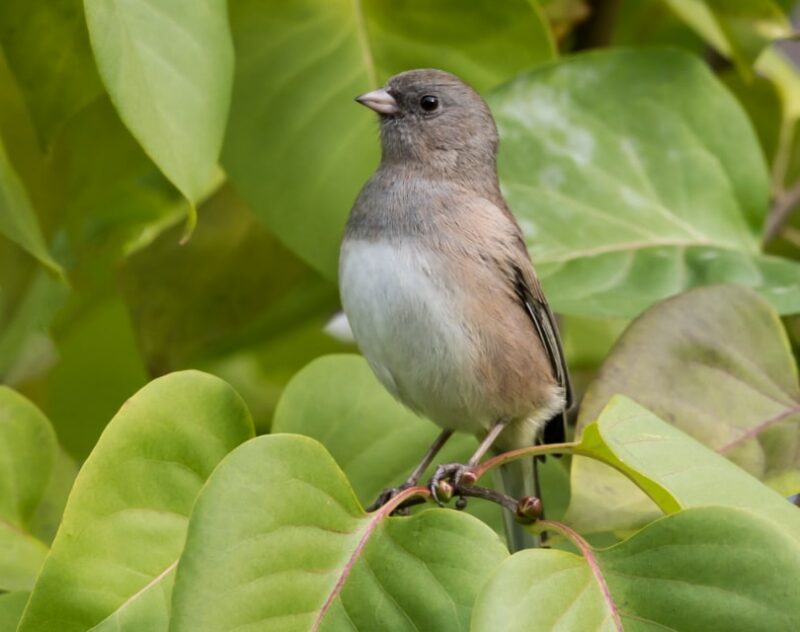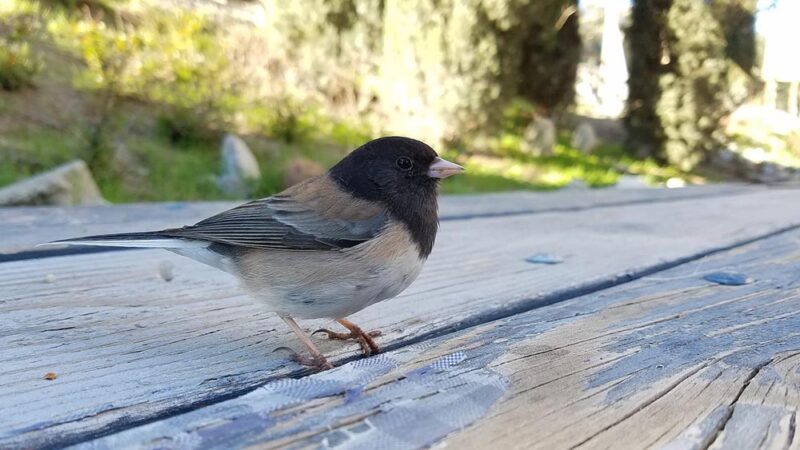Do Juncos Migrate? What Do They Do in the Winter?
Last Updated on

One of the most popular facts about birds is that they tend to migrate to the south for the winter. Why? Because many bird species simply don’t care for cold weather. Not only does it make it hard to find suitable food such as edible seeds, berries, and insects, but Northern and Eastern temperatures can be especially harsh – just like it is for humans. But do juncos (also known as “dark-eyed juncos”) migrate in the winter, or do they stay in their same habitat all year round? Find out in this article.
The short answer is yes, most Juncos migrate to warmer climates in the winter. However, Juncos living in places like the Appalachian Mountains may not migrate.

Do Juncos Migrate? To Where?
Yes. Most juncos that live in Alaska, Canada, and northern states such as Washington and Montana will migrate to southern states during the winter months. And depending on their location some will simply migrate to Midwestern states instead of making the flight all the way to the South.
However, juncos living in the Appalachian Mountains or in western states won’t migrate won’t at all. So to say, it really depends on the junco’s location and the availability of local food supplies.

Interesting Facts About Juncos
- The dark-eyed junco is a rounded-headed, dark-brown-colored bird with a short, pink-colored bill.
- Juncos live with 12-20 birds in small flocks during autumn and winter. Each flock is organized in a strict hierarchy and occupies a territory of 10-13 acres.
- The length of a dark-eyed junco can be between 5 and 6 inches, and it can weigh 0.6 ounces. Interestingly, females are slightly bigger than males.
- The dark-eyed junco is a dark-eyed species with a dark head, brown backs or breasts, and a white or light-grayish belly. Their tail is dark in the middle and light white at the edges. The plumage of females is slightly lighter.
- The dark-eyed junco is an omnivore, which means that it eats both plants and meat. The main food source is seed and berries. In their breeding seasons, they’ll eat caterpillars, ants, moths as well as flies, flies, and beetles.
- The alarm calls of dark-eyed juncos alert others to imminent danger. The same function is achieved by exposing their white tail feathers.
- Dark-eyed juncos have many natural enemies, including hawks and shrikes as well as squirrels, cats, chipmunks, cats, weasels, and owls.
- The mating season for dark-eyed Juncos begins around early April.
- At the start of spring, males can occupy territories of between 1 and 3 acres. They sing to repel competition and attract females. Song of the dark-eyed Junco is a fast, trill-like song that includes warbles, and high whistles. To show off their white feathers and impress females, males will often spread their wings and tail feathers.
- Most juncos mate for life and they typically produce two to three broods each season.
- The female lays up to six eggs, each one with brown scattered spots. After incubation for 11 to 13 days, they hatch.
- The female builds a cup-shaped nest in the ground, usually under large trees or roots. For the construction of the nest, males collect sticks, fallen feathers, moss, and leaves.
- The nest of dark-eyed Juncos is often the place where brown-headed cowbirds lay their eggs. These eggs are indistinguishable from their own brood, so they’ll raise brown-headed cowbirds just like their own chicks.
- The young dark-eyed juncos will usually leave the nest 9 to 13 days after hatching. They will be able to start an independent existence 3 weeks later and in 1 year, they’ll reach sexual maturity and begin looking for mates.
- The dark-eyed junco can live up to about 8-11 years out in the wild.


Final Thoughts
Most juncos will migrate to warmer temperatures and southern parts of the United States for food availability and more suitable weather conditions. However, there are some juncos, such as those located in western states and near the Appalachian Mountains that will stay in the same location as long as there is food available and temperatures are somewhat moderate.
Featured Image Credit: Luc Pouliot, Shutterstock
About the Author Robert Sparks
Robert’s obsession with all things optical started early in life, when his optician father would bring home prototypes for Robert to play with. Nowadays, Robert is dedicated to helping others find the right optics for their needs. His hobbies include astronomy, astrophysics, and model building. Originally from Newark, NJ, he resides in Santa Fe, New Mexico, where the nighttime skies are filled with glittering stars.
Related Articles:
10 Types of Hummingbirds in Arkansas (With Pictures)
8 Types of Hummingbirds in Nebraska (With Pictures)
5 Types of Hummingbirds in Idaho (With Pictures)
3 Types of Hummingbirds in Mississippi (With Pictures)
8 Types of Hummingbirds in Kansas (With Pictures)
5 Types of Hummingbirds in West Virginia (With Pictures)
5 Types of Hummingbirds in Ohio (With Pictures)
Where Do Nuthatches Nest? Nuthatch Nesting Habits Explained
